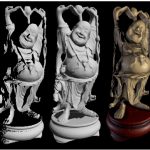Brian Curless
Most Recent Affiliation(s):
- University of Washington, Assistant Professor
Bio:
SIGGRAPH 2000
Brian Curless is an assistant professor of Computer Science and Engineering at the University of Washington. He received a B.S. in Electrical Engineering from the University of Texas at Austin in 1988 and M.S. and Ph.D. degrees in Electrical Engineering from Stanford University in 1991 and 1997, respectively. Curless’s recent research has focused on acquiring and building complex geometric models using structured light scanning systems. In the vision literature, he has published results on fundamentally better methods for optical triangulation, and at SIGGRAPH, he published a new method for combining range images that led to the first “3D fax” of a geometrically complex object. Curless currently sits on the Technical Advisory Board for Parafonn, Inc., a company that is commercializing Stanford-developed technology for building CAD-ready models from range data and polygonal meshes. In the winter of 1999, Curless worked with Marc Levoy on the Digital Michelangelo Project in Florence where they captured the geometry and appearance of a number of Michelangelo’s statues. His teaching experience includes both graduate and undergraduate graphics courses, including courses related to 3D photography taught at Stanford, the University of Washington, CVPR ’99, and SIGGRAPH ’99. Curless received a university-wide Outstanding Teaching Award from Stanford in 1992 and an NSF CAREER award (1999) and Sloan Fellowship (2000) at the University of Washington.
SIGGRAPH 1999
Brian Curless is an assistant professor of Computer Science and Engineering at the University of Washington. He received a B.S. in Electrical Engineering from the University of Texas at Austin in 1988 and M.S. and Ph.D. degrees in Electrical Engineering from Stanford University in 1991 and 1997, respectively. After the B.S. degree, Curless developed and Implemented high speed, parallel, digital signal processing algorithms at SRI International. While earning the Ph.D., he consulted for Silicon Graphics Incorporated and built the prototype for SGl’s Annotator product, a system for hyper-media annotation of 3D databases. Curless’s recent research has focused on acquiring and building complex geometric models using structured light scanning systems. In the vision literature, he has published results on a fundamentally better method for optical triangulation, and at SIGGRAPH, he published a new method for combining range images that led to the first “3D fax” of a geometrically complex object. Curless currently sits on the Technical Advisory Board for Paraform, Inc., a company that is commercializing Stanford-developed technology for building CAD-ready models from range data and polygonal meshes. He is also a member of the Editorial Board for the Journal Computers and Graphics. In the winter of 1999, Curless will work with Marc Levoy on the Digital Michelangelo Project in Florence where they will capture the geometry and appearance of Michelangelo’s statues. Curless received an Outstanding Teaching Award from Stanford University in 1992 and he’s been recommended for an NSF CAREER award that begins in the spring of 1999.
Course Organizer:
Learning Category: Jury Member:
Learning Category: Presentation(s):
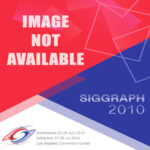
Type: [Technical Papers]
GradientShop: A Gradient-Domain Optimization Framework for Image and Video Filtering Presenter(s): [Bhat] [Zitnick] [Cohen] [Curless]
[SIGGRAPH 2010]

Type: [Technical Papers]
Automated generation of interactive 3D exploded view diagrams Presenter(s): [Li] [Agrawala] [Curless] [Salesin]
[SIGGRAPH 2008]

Type: [Technical Papers]
Interactive cutaway illustrations of complex 3D models Presenter(s): [Li] [Ritter] [Agrawala] [Curless] [Salesin]
[SIGGRAPH 2007]
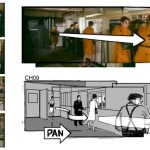
Type: [Technical Papers]
Schematic storyboarding for video visualization and editing Presenter(s): [Goldman] [Curless] [Salesin] [Seitz]
[SIGGRAPH 2006]

Type: [Technical Papers]
Animating pictures with stochastic motion textures Presenter(s): [Chuang] [Goldman] [Zheng] [Curless] [Salesin] [Szeliski]
[SIGGRAPH 2005]

Type: [Technical Papers]
Panoramic video textures Presenter(s): [Agarwala] [Zheng] [Pal] [Agrawala] [Cohen] [Curless] [Salesin] [Szeliski]
[SIGGRAPH 2005]

Type: [Technical Papers]
Interactive digital photomontage Presenter(s): [Agarwala] [Dontcheva] [Agrawala] [Drucker] [Curless] [Salesin] [Cohen]
[SIGGRAPH 2004]
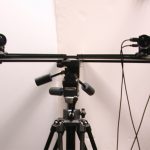
Type: [Technical Papers]
Spacetime faces: high resolution capture for modeling and animation Presenter(s): [Zhang] [Snavely] [Curless] [Seitz]
[SIGGRAPH 2004]
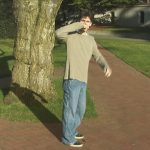
Type: [Technical Papers]
Shadow matting and compositing Presenter(s): [Chuang] [Goldman] [Curless] [Salesin] [Szeliski]
[SIGGRAPH 2003]

Type: [Technical Papers]
The space of human body shapes: reconstruction and parameterization from range scans Presenter(s): [Allen] [Curless] [Popovic]
[SIGGRAPH 2003]
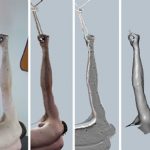
Type: [Technical Papers]
Articulated body deformation from range scan data Presenter(s): [Allen] [Curless] [Popovic]
[SIGGRAPH 2002]

Type: [Technical Papers]
Interactive skeleton-driven dynamic deformations Presenter(s): [Capell] [Green] [Curless] [Duchamp] [Popovic]
[SIGGRAPH 2002]
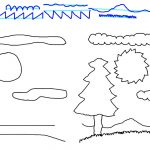
Type: [Talks (Sketches)]
Shape analogies Presenter(s): [Hertzmann] [Oliver] [Curless] [Seitz]
[SIGGRAPH 2002]
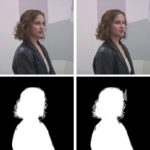
Type: [Technical Papers]
Video matting of complex scenes Presenter(s): [Chuang] [Agarwala] [Curless] [Salesin] [Szeliski]
[SIGGRAPH 2002]

Type: [Courses]
Digital Geometry Processing Organizer(s): [Schröder] [Sweldens]
Presenter(s): [Schröder] [Sweldens] [Curless] [Guskov] [Zorin]
Entry No.: [50]
[SIGGRAPH 2001]

Type: [Technical Papers]
Image analogies Presenter(s): [Hertzmann] [Jacobs] [Oliver] [Curless] [Salesin]
[SIGGRAPH 2001]

Type: [Courses]
3D Photography Organizer(s): [Curless] [Seitz]
Presenter(s): [Curless] [Seitz] [Bouguet] [Levoy] [Nayar]
Entry No.: [19]
[SIGGRAPH 2000]
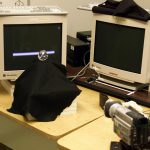
Type: [Technical Papers]
Environment matting extensions: towards higher accuracy and real-time capture Presenter(s): [Chuang] [Zongker] [Hindorff] [Curless] [Salesin] [Szeliski]
[SIGGRAPH 2000]

Type: [Technical Papers]
Surface light fields for 3D photography Presenter(s): [Wood] [Azuma] [Aldinger] [Curless] [Duchamp] [Salesin] [Stuetzle]
[SIGGRAPH 2000]
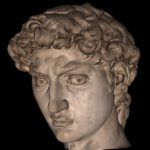
Type: [Technical Papers]
The digital Michelangelo project: 3D scanning of large statues Presenter(s): [Levoy] [Pulli] [Curless] [Rusinkiewicz] [Koller] [Pereira] [Ginzton] [Anderson] [Davis] [Ginsberg] [Shade] [Fulk]
[SIGGRAPH 2000]
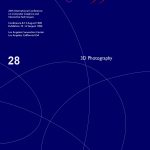
Type: [Courses]
3D Photography Organizer(s): [Curless] [Seitz]
Presenter(s): [Curless] [Seitz] [Bouguet] [Levoy]
Entry No.: [28]
[SIGGRAPH 1999]

Type: [Technical Papers]
Environment matting and compositing Presenter(s): [Zongker] [Werner] [Curless] [Salesin]
[SIGGRAPH 1999]
Role(s):
- Course Organizer
- Course Presenter
- Talk (Sketch) Presenter
- Technical Paper Presenter
- Technical Papers Jury Member


